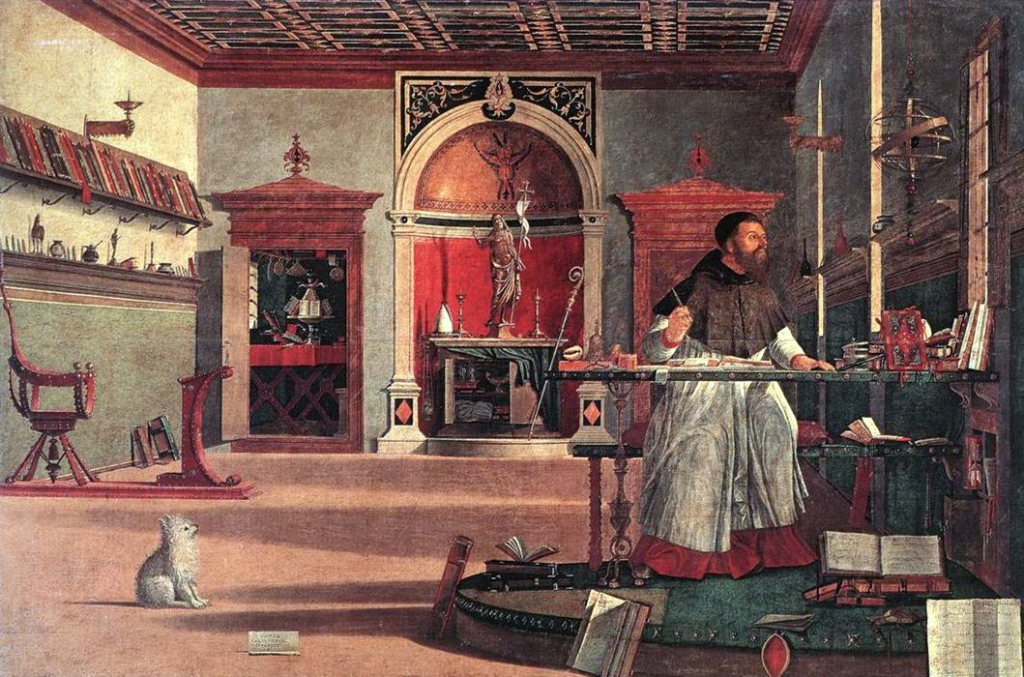In spring, an event attracted significant media attention that Protestants usually perceive from a certain distance: the new Pope Leo XIV was elected on 8 May, after a short, only two-day long conclave. It was amazing how he impressed many observers in the first few days by the seemingly effortless noblesse with which he took office. Where does this straightforwardness, paired with simplicity and elegance, come from?
Taking a look at his biography, which was linked to his education in the Augustinian order from a young age, can help to explain this. Before he became a full member of the order, he studied mathematics and philosophy, thus following the ambitions of the church father Augustine (354-430), who throughout his life sought to combine contemporary science with philosophy and theology. There is a famous depiction of St Augustine by the Venetian painter Vittore Carpaccio (1465-1525). It depicts Augustine’s study room, featuring the objects and atmosphere of his faith-inspired studies. The room is not dark and closed, but bright and wide open. The light is falling through a window onto Augustine’s face as he stands at his desk, touching him like a vision. In the foreground, you can recognise open pages of his studies, and on the left wall, you see many books neatly lined up. An altar niche with mitre and crozier, the insignia of his episcopal office, opens on the back wall.

In addition to the books, the painting shows objects of the practical astronomic and botanical studies, an astrolabe and a conch horn. The things of the world are examined concretely and linked to the inner experiences of Christian faith. The study expands into a spiritual vision that views things as signs of divine creation. This awareness is reflected by a nice detail: a small white dog sits wide awake on the floor and attentively observes what is happening.
The impulse of the Carpaccio painting can certainly be taken to mean that the new Pope’s following of St Augustine does not lead into a dark monastic cell, but into a bishop’s bright study room, where he combines science and theology and awaits the spiritual visions by writing, questioning and thinking. In his first sermon in San Giovanni in Laterano, Leo XIV challenged the faithful “to learn and understand together”. As education professionals, we should appreciate this. And incidentally, Protestants also have a famous Augustinian monk in their ranks: Martin Luther.
In the hope of spiritual and ecumenical impulses from this new Pope, we wish you all a wonderful summer!
Heid Leganger-Krogstad and Tania ap Siôn (ICCS), Piet Jansen and Michael Jacobs (IV)
